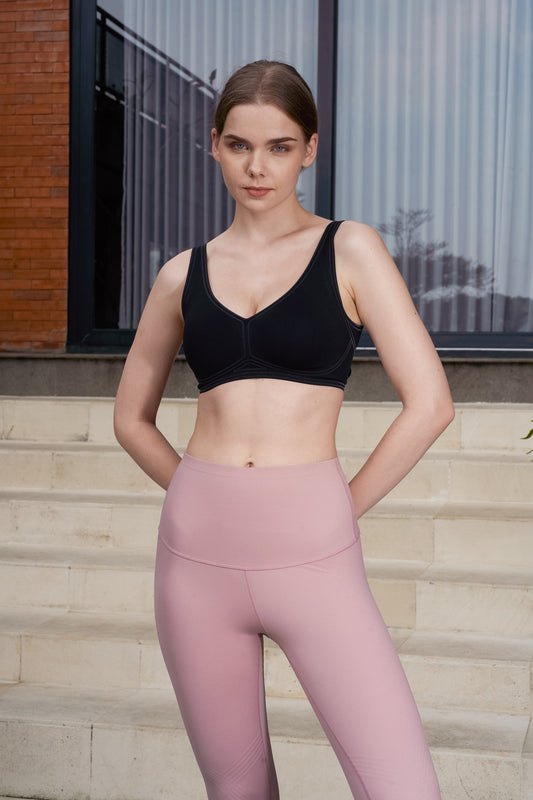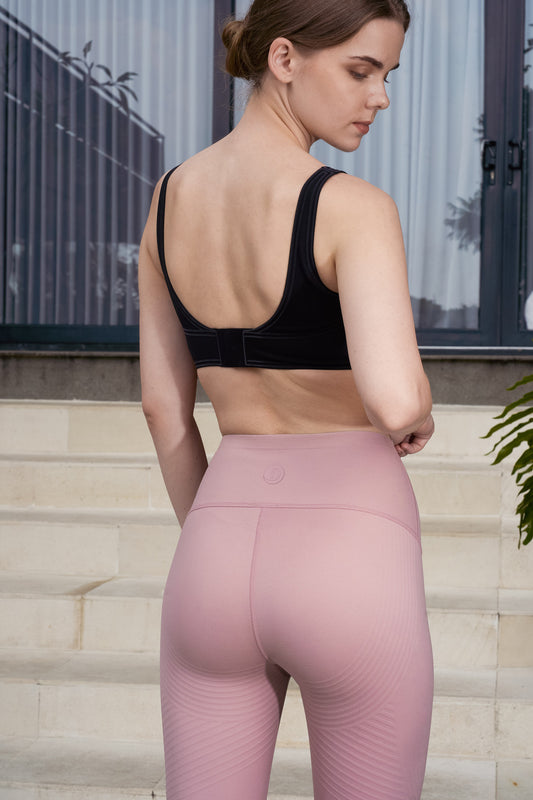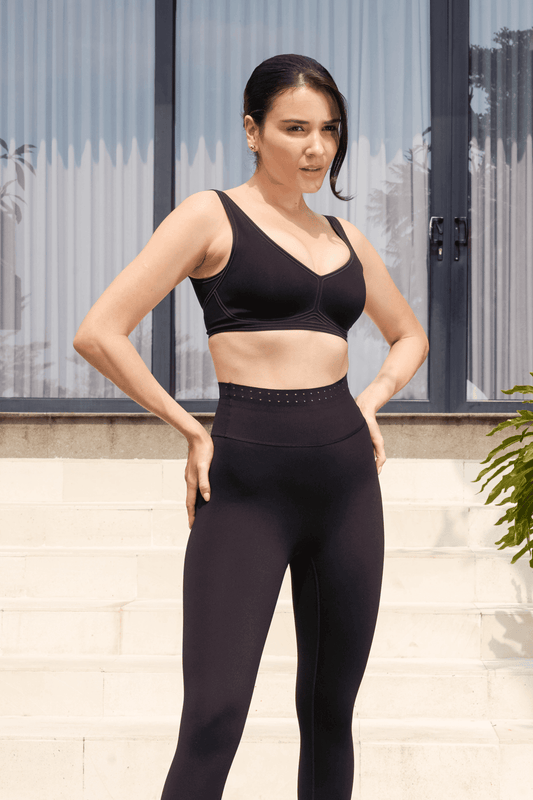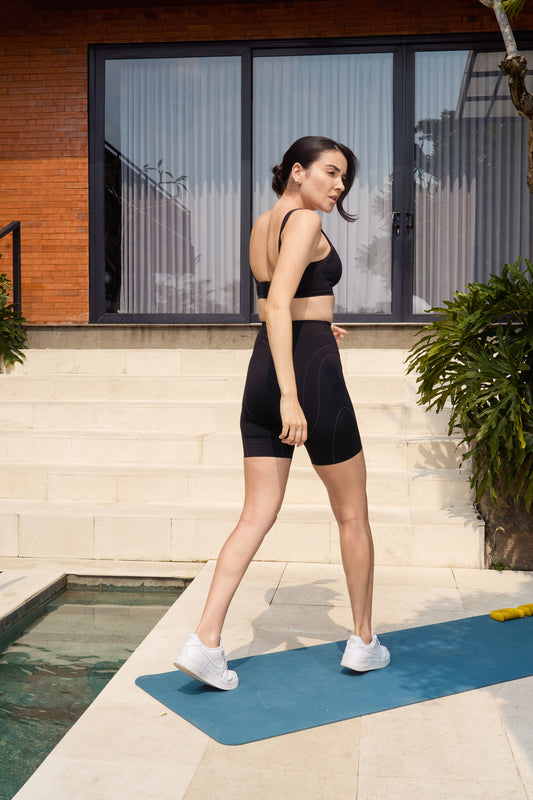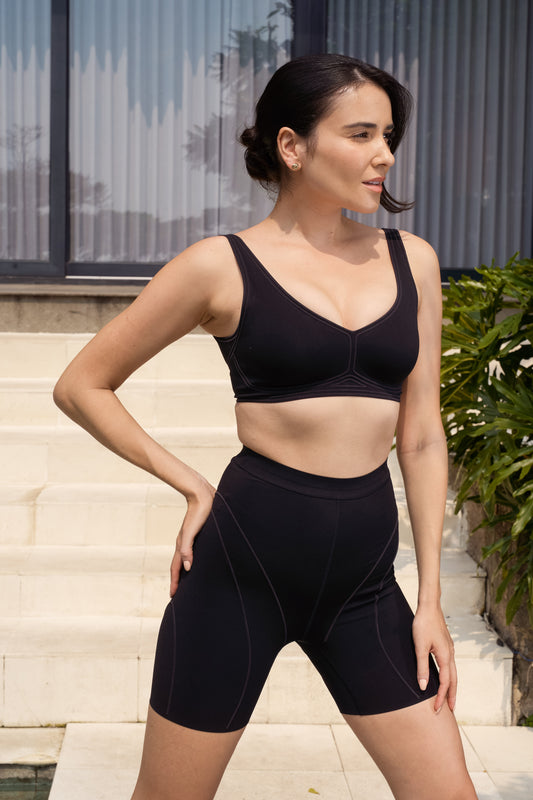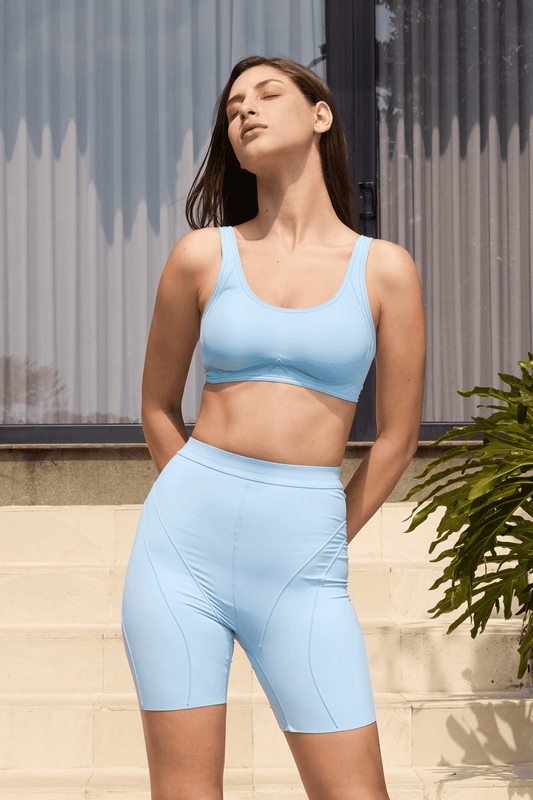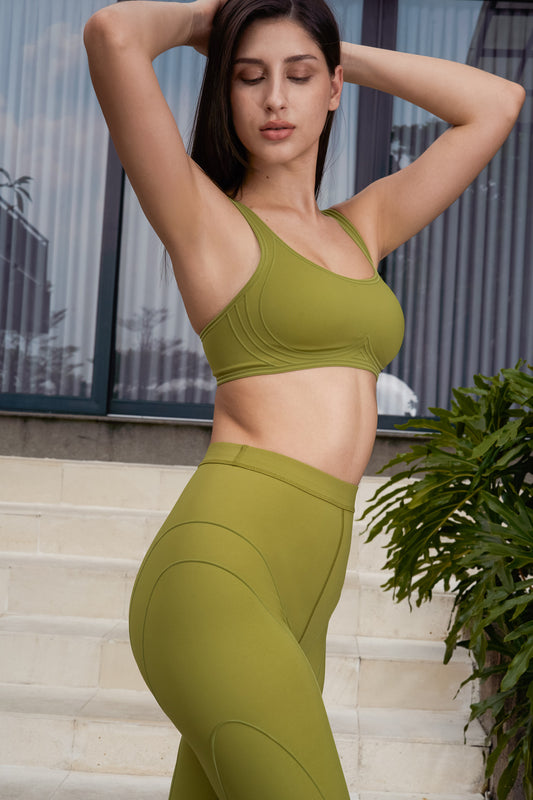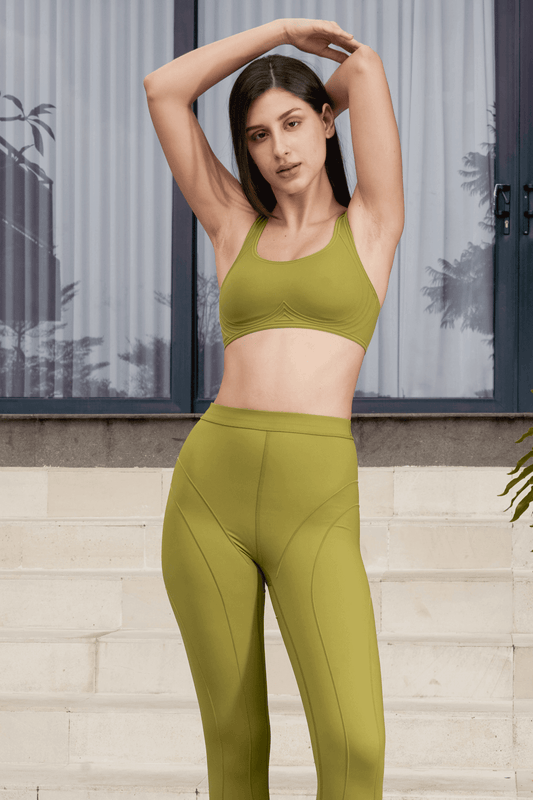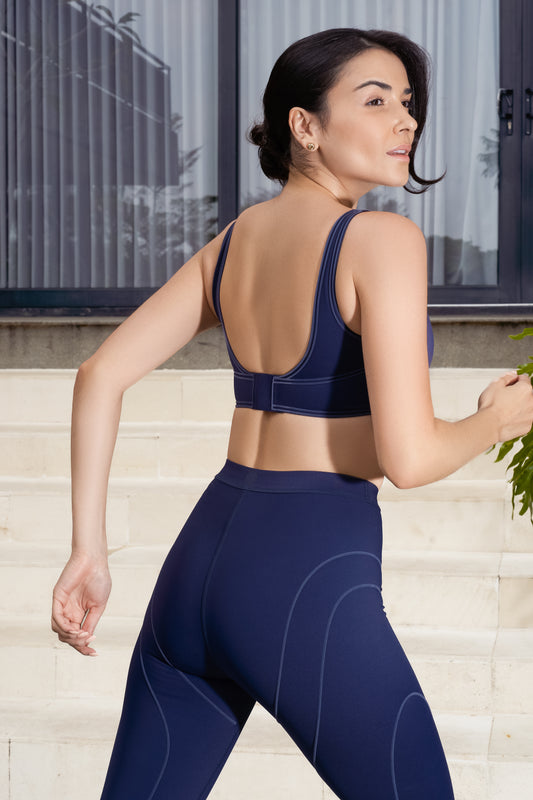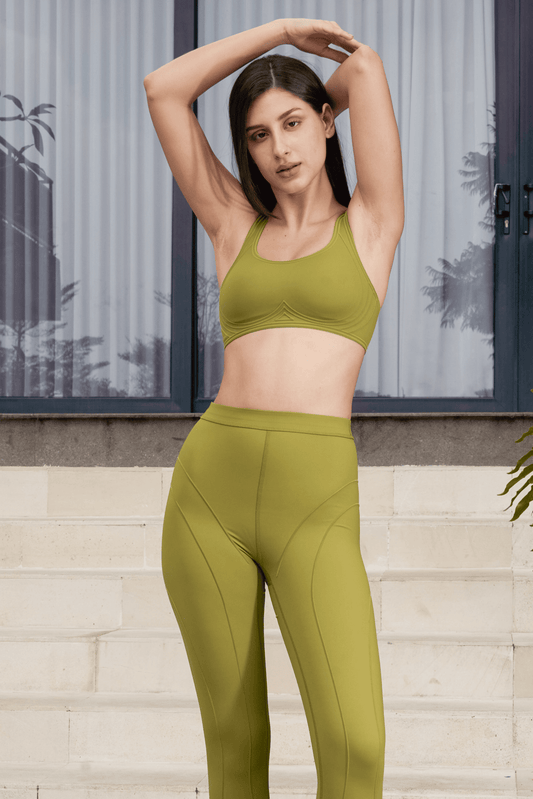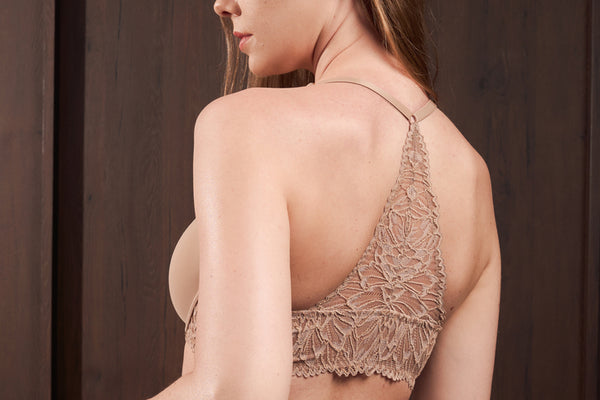Table of Content
When shopping for the perfect swimsuit, the fabric is just as important as the style. The best fabric for swimwear determines not only how comfortable your swimsuit feels but also how well it holds up against water, sun, and chlorine. With so many materials available, choosing the right one can be confusing.
In this guide, we’ll break down the most commonly used swimwear fabrics and their characteristics, what to consider when picking the perfect material, and which fabrics are best for durability, comfort, and performance. Plus, we’ll recommend high-quality swimwear from Diana, ensuring you get both style and function in one!
Common Fabrics Used for Swimwear
When choosing the best fabric for swimwear, it’s important to consider comfort, durability, stretch, and resistance to chlorine and UV rays. Here are the most commonly used materials for swimsuits and what makes each of them unique:
1. Elastane
Elastane, commonly known as Spandex or Lycra, is a synthetic fiber known for its exceptional stretch and shape retention. This fabric can stretch up to 8 times its original size and return to its original form without sagging.
Because of this, elastane is widely used in swimwear, as it provides a snug and comfortable fit that moves with the body. It is lightweight, smooth, and strong, making it a go-to choice for professional and casual swimmers alike. Another great advantage of elastane is its UV protection.
On its own, it has a UPF (Ultraviolet Protection Factor) rating of 25-39, helping to shield the skin from harmful sun exposure. However, since elastane is not very breathable, it is usually blended with other fabrics like nylon or polyester to enhance durability and comfort.
This combination creates swimwear that is moisture-wicking, quick-drying, and resistant to body oils, lotions, and detergents.
2. Nylon
Nylon is another popular swimwear fabric due to its softness, durability, and elasticity. While it’s not as stretchy as elastane, nylon still provides good flexibility and shape recovery, making it ideal for form-fitting swimwear.
Additionally, nylon is known for its high resistance to abrasion, meaning it won’t wear out quickly even after frequent use in water. One of the biggest advantages of nylon is its water-resistant properties.
Unlike natural fibers like cotton, nylon does not absorb water, allowing it to dry quickly after swimming. This makes it a great option for active swimmers who need a lightweight and fast-drying fabric.
Nylon also offers moderate UV protection, although not as high as polyester or elastane. Because of its silky texture and comfortable fit, it is often blended with elastane to create high-performance swimwear.
3. Polyester
Polyester is one of the best choices for swimwear due to its exceptional durability, color retention, and resistance to chlorine and UV rays. Unlike nylon, polyester does not break down easily when exposed to pool chemicals or saltwater, making it ideal for long-term use.
This fabric also has a high UPF rating, offering great sun protection for outdoor swimmers. A key advantage of polyester is its quick-drying and moisture-wicking properties. It allows sweat and water to evaporate quickly, keeping the body cool and comfortable.
Polyester is also stain-resistant and easy to maintain, making it a practical choice for swimwear. Although it is not as stretchy as elastane, it is often blended with Spandex or Lycra to improve elasticity while maintaining its strength and resistance to shrinking or wrinkling.
What to Consider When Choosing Swimwear Fabric
Choosing the right fabric for your swimwear is just as important as picking the perfect design. The material affects how comfortable, durable, and functional your swimsuit will be. Here are some key factors to keep in mind when selecting the best fabric:
1. Weight
Swimwear fabrics usually range between 180-200 g/m², which is ideal for most fashion swimwear. If you choose a lighter fabric, such as 150 g/m² (like Carvico’s Gemma), it may feel more like lingerie.
On the other hand, heavier fabrics (200-220 g/m² or more) are often used for competitive swimwear or textured designs.
2. Composition
The composition of swimwear fabric affects its stretch and durability. For example, 80% Nylon and 20% Spandex will be stretchier than 85% Nylon and 15% Spandex—but this only applies when comparing fabrics from the same manufacturer.
Since different suppliers may have different production methods, it’s always best to get fabric swatches or feel the fabric yourself before making a decision.
3. Sustainability
Traditional swimwear fabrics can be harmful to the environment, but eco-friendly options are now available. One of the best sustainable fabrics is ECONYL®, a regenerated nylon made from discarded fishing nets, fabric scraps, and plastic waste.
The recycling process involves four steps: Rescue, Regenerate, Remake, and Reimagine. Another great option is REPREVE®, which is made from recycled plastic bottles. As consumer demand for sustainability grows, fabric suppliers and manufacturers are adapting to more eco-friendly practices.
4. Textured
Fabrics Swimwear trends constantly evolve, bringing new textured fabrics into the spotlight. A few years ago, neoprene became popular due to brands like N.L.P. and Triangl.
More recently, velvet swimwear has gained attention, showing how trends shift over time. While neoprene bonding is still used, many brands explore different textures to stand out while maintaining their unique identity.
Recommended Swimwear from Diana Intimates
Looking for the perfect swimwear? Diana Intimates offers stylish, comfortable, and high-quality options for every occasion. Here are some of our top recommendations:
Designed with seamless technology for a smooth and comfortable fit, this swimsuit hugs your body perfectly without any irritating seams. It’s great for those who want a sleek, second-skin feel in the water.
A stylish yet practical choice for extra sun protection and coverage. The long sleeves help shield your skin from UV rays, making it ideal for outdoor swimming or water sports.
This elegant swimset features gold foil details for a touch of luxury while providing full coverage for a modest and stylish look. Perfect for those who prefer a sophisticated and comfortable swimwear option.
A sporty and durable swimsuit with plastisol print accents, designed for performance and comfort. The legsuit style offers more coverage while still allowing for flexibility and ease of movement in the water.
Find the Best Fabric for Your Swimwear!
Choosing the best fabric for swimwear depends on how often and where you’ll be swimming. Nylon blends offer softness and stretch, while polyester-based fabrics provide durability and chlorine resistance. For a perfect mix of comfort and performance, polyester-spandex blends are the top choice.
Diana Intimates is all about premium swimsuits that everyone can enjoy! We believe that high-quality swimwear shouldn't come with a high price tag. That’s why we offer beautifully crafted designs at more affordable prices—without compromising on quality.
Each piece goes through a long, careful process, from material selection to expert craftsmanship, with strict quality control at every step. Every detail is designed for comfort, durability, and style, making sure you feel confident in and out of the water. Either you’re looking for tips on how to choose a swimsuit or need a swimwear care guide, trust Diana Intimates to bring you the best!
FAQ
Which fabric is best for swimming?
Polyester blends are the best for swimming—they’re durable, chlorine-resistant, and quick-drying.
Which fabric is common for making swimwear?
Nylon-Spandex and Polyester-Spandex blends are the most common, offering stretch, comfort, and longevity.


